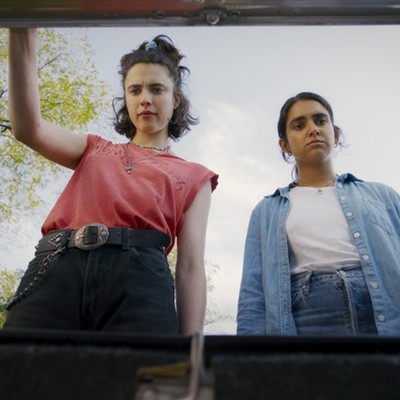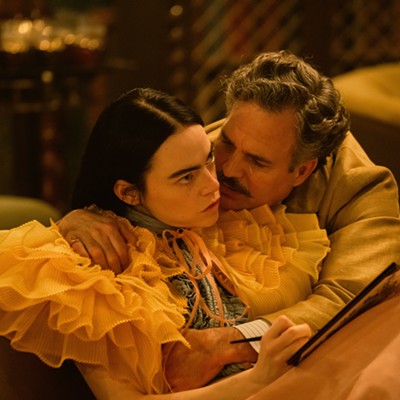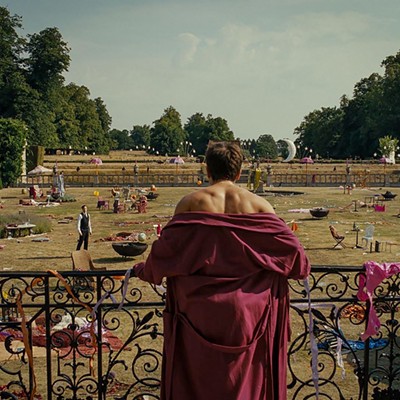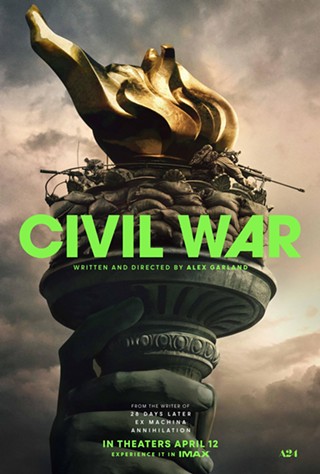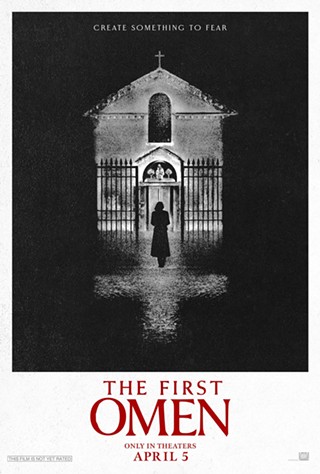Sherman eventually left Tucson to go to Hampshire College in Amherst, Mass., where he got a degree in film and philosophy. He then moved on to San Francisco for graduate work at the San Francisco Art Institute before working at the independent film distributor Canyon Cinema and teaching filmmaking at the California College of the Arts in Oakland for seven years. He also founded the 30-seat Total Mobile Home microCINEMA in San Francisco with his wife, fellow filmmaker Rebecca Barten.
Trips back to Tucson over the years revealed a city rapidly expanding in all directions, with the desert spaces in and around Tucson quickly disappearing. His thinking on this eventually led to Wasteland Utopias, a film two years in the making. The film will premiere on Thursday, March 27, as part of the Museum of Contemporary Art (MOCA) Made in Tucson/Born in Tucson series.
As befits an experimental filmmaker (he has made 15 films, from 3 to 40 minutes in length), Sherman takes an unconventional approach to his subject. Wasteland Utopias approaches the urbanization of the Sonoran Desert sideways, focusing on two individuals with radically different views on what the desert has to offer: mega-developer Del Webb and psychologist, and author and radical scientific naturalist Wilhelm Reich.
Webb's construction company built an astounding array of buildings and developments, including Pueblo Gardens in Tucson, several Las Vegas casinos, museums and military installations. He is probably best known in Arizona for building the mega-development Sun City, several World War II-era Japanese internment camps and the Hughes Aircraft Plant in Tucson.
The Austrian-born Reich was a controversial character who authored many books, including The Mass Psychology of Fascism. A prize student of Sigmund Freud, Reich developed a theory of an invisible, all-pervasive cosmological energy he called "orgone," and devised an "orgone accumulator" that he claimed had healing properties. He also built a "cloudbuster" out of copper piping to help bring rain to arid spaces.
Reich brought his cloudbuster to Tucson in 1954-'55, setting it up for several months outside of Oracle Junction; he apparently succeeded in bringing moisture to the area in the middle of a five-year drought. Webb, meanwhile, was in the area building the town of San Manuel.
"That's what got me really excited," Sherman says. "These people were literally in the same place at the same time, with these two radically divergent philosophies and practices, one being the insider, one being the outsider."
Webb hobnobbed with Howard Hughes, Richard Nixon, J. Edgar Hoover and the moneyed elite. On the other hand, Reich had the misfortune to run afoul of the Food and Drug Administration during the socially rigid 1950s. The FDA was convinced that his orgone work was both quackery and sexually charged (the name was derived from "orgasm"). His books were literally burned by the federal government, and he died in prison in 1957.
The outdoor screening of Wasteland Utopias involves dual projections on the back wall of a building at South Sixth, Toole and Alameda avenues; a live sound mix; and an interactive atmosphere. The material includes footage of the Sun City Posse, Bisbee filmmaker and artist Dale Clark, archival footage of Reich and Webb, old Sun City publicity films from the 1960s and original footage shot around the Sonoran Desert.
Sherman says: "The genre is drawing from documentary and personal, experimental-poetic film, found-footage collage and an experimental-essayistic form. It's a sort of a hybrid investigation of these themes and these two people. The event is really important, how it's going to be presented, where ... it's a performance; it's a unique experience that brings the Sonoran Desert back, to be projected in downtown Tucson.
"It creates this community for a night that can interact and can see the film from the sidewalk, or driving by or on the train. I'm really interested to see what sort of a community is going to come and engage in this experience. It's very much a challenge to a normal multiplex theater-viewing experience. I like the excitement created in the unknown territory of engaging a completely different, unknown audience, and the performance that can happen rather than the really controlled way that cinema is usually presented."


